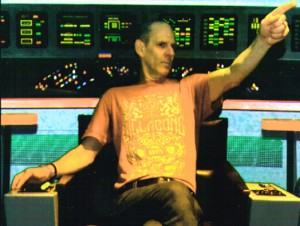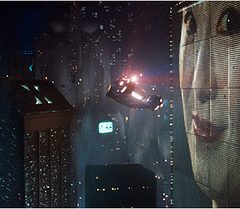James Rosenthal is a Senior Lecturer in Art History at the University of the Arts and teaches Visual Culture on the new MFA degree program at Moore College of Art and Design.
I am interested in how visual culture today overlaps with the more theoretical side of science fiction. The notion of the dystopian future, in particular, sits on the art world proper and results in a lot of work that is abject. A long list of contemporary artists come to mind starting with Mike Kelly, Chris Burden, Matthew Barney, Bruce Nauman, Leon Golub, Cindy Sherman and about any “neo-Expressionist” you can think of, particularly Anselm Keiffer.

My immediate research into the history of Star Trek and science fiction in popular culture, led me directly to Ridley Scott’s Blade Runner from 1982 (movie trailer here). This spectacularly visual movie, along with Alien and Terminator set the standard for style and post apocalyptic darkness that has continued in popular culture and art until now. Having re-viewed Blade Runner at home and then seen the third installment of Terminator on the big screen, I am convinced of the impact of these stories and the accurate illustration they make of the future/present day. The underlying concepts defy the actual vehicle of film and the mere term, movie entertainment.








